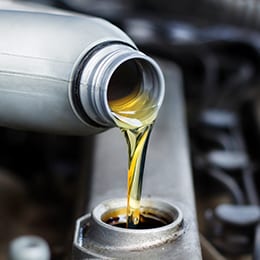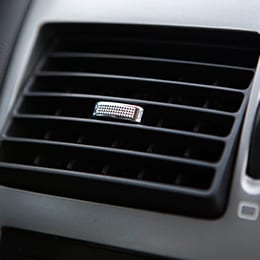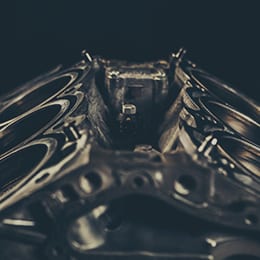BRAKE REPAIR NEAR ME
Having your brakes properly maintained is essential for driving safety. For this reason, we recommend regular brake inspections and regular maintenance for your vehicle. At Sun Devil Auto, we offer a complimentary brake inspection to determine what type of repairs, if any, are needed. Our same day service is available for most cars and light trucks.
Our brake experts can diagnose anti-lock brake systems, unlike many other auto shops in Phoenix. We can inspect your brakes and brake pads to direct you on how often to replace them. We’ll then show you our evaluation and provide recommendations on the next steps to take. Bring your vehicle in to any one of our Phoenix locations for a free brake inspection. We provide service on all types of vehicle makes and models and can repair or replace any type of brake part. Check our auto repair coupons page for deals on brake repairs.
Brake Repair Service in Phoenix, AZ Metro
Sun Devil Auto proudly serves the Phoenix valley metro with locations in Phoenix, Tempe, Scottsdale, Paradise Valley, Mesa, Gilbert, Chandler, Fountain Hills, Maricopa, Queen Creek, Cave Creek, Glendale, Sun Lakes, and Sun City West. Find a location today to service your brakes, our ASE-Certified Technicians will be happy to assist you.
SERVICE INCLUDES:
- Limited-Lifetime warranty*
- Resurface rotors or rear drums
- Re-pack front wheel bearings (except sealed units)
- Inspect master cylinder and brake hoses
- Road-test the vehicle
*This warranty replaces the friction material free of charge for the lifetime of ownership of vehicle. All other parts that fail in the system are not guaranteed unless replaced by Sun Devil Auto and noted as replaced on the Sun Devil Auto invoice. The labor to replace the warrantied parts will be free of charge for 24 months or 24,000 miles.
Save on your repair! SEE ALL OUR OFFERS >
POPULAR REPAIR & MAINTENANCE SERVICES
Signs That Your Vehicle Needs a Brake Repair
Squeaking, rumbling, and grinding metallic sounds used to be the clear indicator that the brake system needed attention. However, with ever-changing brake technology, and new materials being developed to help extend the life of brake pads; noises aren’t always the tell-tale indicator that it’s time to replace worn out parts.
While it’s a good idea to have your vehicle checked any time it is making noise–especially noises that you haven’t heard before, there are a few key signs that may indicate you need to have your brakes repaired or replaced.
Any of these indicators should lead you to seek the advice of a professional at Sun Devil Auto to properly assess any braking concerns you may have:
- Noise such as grinding/metal sounds when applying the brakes
- Noise throughout the stop
- Pulsation in the pedal or steering wheel when applying brake pedal
- Increased stopping distance
- Fading, soft, or low pedal when applying the brakes
- Resistance when attempting to depress brake pedal
- Warning lights on dash (BRAKE or ABS) – usually red or orange in color
What Goes Into A Brake Inspection
There are several things that go into completing a brake inspection to ensure the safety of your vehicle. When you arrive to the service center, a Service Advisor will ask you to describe any symptoms your car has displayed. Give the Service Advisor as many details as you can on any squeaks, creaks, grinding, or squealing.
By providing full details to your Service Advisor, your Technician will have a better idea of what to look for during the inspection. Next, the Technician will test drive your vehicle, unless a safety concern exists, in an attempt to duplicate the symptoms and ensure that they are looking for the same things that you experienced.
Once the test drive is complete the Technician will place your vehicle on the service rack and remove all 4 wheels for a proper inspection. Since your brakes work in conjunction of front to rear, it is necessary to check all brake components. The Technician then performs a complete visual inspection of the brake system including the master cylinder, brake booster, hydro-boost unit, rubber and steel lines, fluid condition, calipers, brake pads, and rotors.
The Technician will use a brake gauge to determine the thickness of the brake pads and a micrometer to measure the thickness of the brake rotors. Brake rotors require replacement once they have been worn past a certain spec based on manufacturer specification. The brake caliper will only travel so far before damage occurs and it can cause the piston inside the caliper to overextend, damaging the caliper. If the rotors are too thin, they will be unable to properly dissipate heat created from friction. Once these items have all been properly inspected and measured, a recommendation will be made as to how to proceed with repairs.
Understanding The Braking System
When applying your brake pedal you begin the process of slowing and stopping the car with the assistance of hydraulic fluid, creating friction at the wheels, that cause the vehicle to stop. When you depress your brake pedal you are using a lever system, a vacuum, or electric assist to move a piston along the inside of the master cylinder. The movement of this piston pushes the hydraulic brake fluid into the lines of your vehicle leading to the 4 wheels.
Often times, this system will also have an Anti-Lock Braking system valve that regulates the pressure created to prevent the brakes from locking up. Once the pressure is created to the 4 wheels, the wheel cylinders or brake calipers, move the brake pads inward towards the rotor to create pressure and friction that begins the process of slowing and stopping the vehicle.
The anti-lock brake system valve uses a signal that it receives from the wheel speed sensors and gauges the pressure received from the master cylinder. Using a micro-processor in the brake system, the ABS module determines whether the vehicle is braking too quickly. The system responds by pulsating the brake pressure, creating a grab and release action, to prevent the vehicle from locking up and causing a skid.
Brake Repair and Replacement
During the brake replacement process, the Technician will perform the following:
- Brake pads or shoes are replaced (both fronts or both rears – left and right sides)
- Rotors or drums are replaced or, if possible, resurfaced to create a clean surface for reuse
- Brake hardware is replaced or re-lubricated to ensure smooth brake pad travel
- Wheel bearings are repacked (when applicable)
- Brake fluid will be bled or flushed (when applicable)
- Vehicle road tested before and after repairs
Frequently Asked Questions About Brake Repair
Q: How long do car brakes last?
A: How long brake pads last depends on a few factors including road conditions and driver habits. From driving with hard stops, frequent stop and go traffic conditions, driving up and down hills or steep grades, weight of the vehicle and any cargo (including the number of people inside), the kind of brake pads the vehicle is equipped with, brake fluid condition, and even a worn out suspension system can contribute to a shortened brake life. Because of the varying factors, it is recommended to have your brakes checked often. At Sun Devil Auto, we perform a free brake inspection with most services including oil changes.
Q: Why does my car shake when I brake?
A: There are several factors that can contribute to a brake shake such as warped rotors, worn out brake pads, or worn suspension components. Even your ABS attempting to activate due to a failing or damaged component can cause a shake. It is best to have this inspected by a professional to better help determine the cause as not all “brake shakes” are brake related.
Q: How much to repair brakes?
A: Brake repair costs can vary depending on what is necessary to repair them completely and properly. Each vehicle’s needs are unique. Some will require the replacement of multiple brake components, whereas some will only require pads and resurfacing of the rotors. It is best to take advantage of the free brake inspection provided by Sun Devil Auto and discuss your options with your Service Advisor for the time required for the repair and any associated costs involved.




